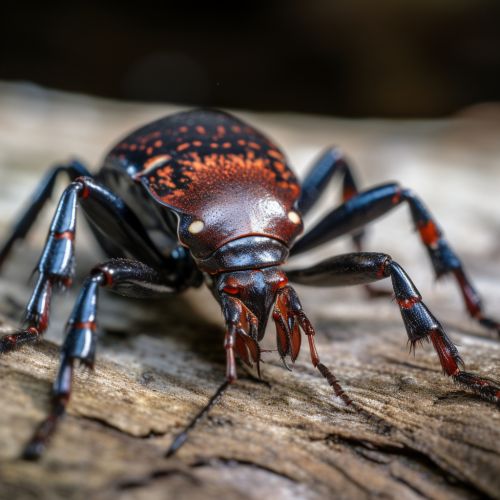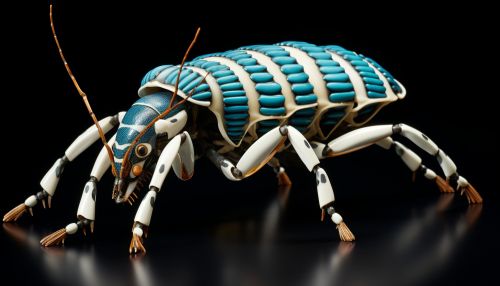Arthropods
Introduction
Arthropods are a group of invertebrate animals that includes insects, spiders, crustaceans, and other similar creatures. They are characterized by their jointed limbs and cuticle made of chitin, often mineralised with calcium carbonate. The phylum Arthropoda is the largest phylum in the animal kingdom, with over a million described species, making up more than 80% of all known living animal species. The study of arthropods is known as arachnology.


Characteristics
Arthropods are distinguished by their segmented bodies and jointed limbs, which give the phylum its name (from the Greek arthron, "joint", and pous, "foot"). The segments of the body are often specialized for various functions. In many arthropods, the body segments are grouped into distinct regions, such as the head, thorax, and abdomen in insects. Arthropods also have a hard exoskeleton, which provides protection and support. This exoskeleton is periodically shed in a process called moulting, allowing the animal to grow.
Classification
Arthropods are classified into five subphyla: Trilobitomorpha (the extinct trilobites), Hexapoda (insects and relatives), Myriapoda (millipedes, centipedes, and relatives), Crustacea (crabs, lobsters, shrimps, and relatives), and Chelicerata (spiders, mites, scorpions, and relatives). The classification of arthropods is complex and has undergone several changes over the years. Modern phylogenetic studies often use genetic data to determine relationships between groups.
Evolution
Arthropods have a long evolutionary history, with the earliest known arthropods dating back to the Cambrian period, over 500 million years ago. The first arthropods were marine creatures, but they soon colonized freshwater and terrestrial environments. The evolution of flight in insects allowed for a great diversification and expansion of this group. The study of arthropod evolution often involves the use of paleontological data, such as fossils, as well as genetic data.
Ecology
Arthropods play a crucial role in many ecosystems. They are often the most abundant animals in a habitat and can be found in nearly all environments on Earth, from the deepest oceans to the highest mountains. Many arthropods are herbivores, feeding on plants, while others are predators or scavengers. Some species are also important decomposers, breaking down dead organic material and recycling nutrients in the ecosystem. Arthropods also serve as a food source for many other animals, and some species have symbiotic relationships with other organisms.
Human Interaction
Humans interact with arthropods in a variety of ways. Some arthropods, such as bees, are beneficial to humans by pollinating crops, while others, such as mosquitoes, are vectors for diseases. Many arthropods are considered pests, damaging crops or invading homes. However, some arthropods are also used by humans for food, such as lobsters and crabs, and for other purposes, such as silk production by silkworms.
Conservation
Many arthropod species are threatened by habitat loss, pollution, climate change, and other factors. Conservation efforts for arthropods often focus on habitat preservation and the control of invasive species that can harm native arthropods. Some arthropods are also protected by law, such as certain species of butterflies.
